This is part 1 of the report and features the description of the trip (including the story of an unfortunate snake bite). Hopefully you will appreciate it the way it is meant - as a sizeable teaser for part 2 which will be online soon and which will show the herpetofauna.
The Amazon rainforest!
After 15 years dedicated to seeing the entire European herpetofauna, I wanted more. Two great trips to the USA (CA, AZ) made me a regular visitor of FHF. The Peruvian posts by Matt Cage provided the spark. The large and colourful diversity in his posts & the possibility to search for some of the most charismatic herp species in the planet’s most iconic ecosystem, convinced me to travel to the same place. Devon Graham from http://amazon-ecotours.com (Margarita Tours) and http://www.projectamazonas.org/ (Project Amazonas) was kind enough to organise a customised and dedicated fieldherping trip for us.
A precise list of observed species will most likely never be achieved, but our species count totals at around 120 species. This was a spectacular trip which we will all remember for the rest of our lives. There is nothing quite like it. It’s fantastic.

me, Gilberto (cook), Peter, Frank, Bobby, Edwin (outstanding(!) herping guide) & Luis (general guide & translator) - © anonymous local man


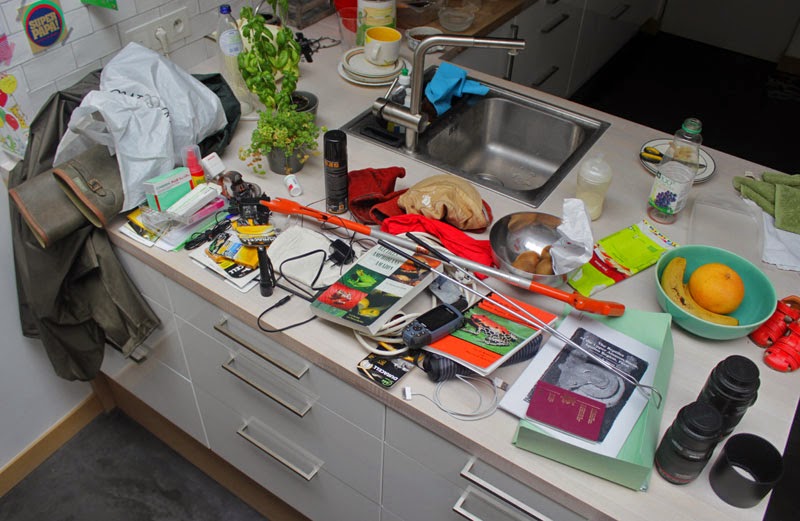
The starting point for our travels is the jungle city of Iquitos, situated in the northeast of Peru, along the Amazon river. Getting there from Europe takes a while (= 30hrs).

approaching Iquitos (see ‘Genaro Herrera, Peru’ in Google Earth) – © Bobby Bok
With about half a million inhabitants, the city is labelled as the largest city in the world which cannot be reached by any road. This city is a busy and sometimes smelly place which I found especially agreeable in the evening. Local transportation happens mainly by moto-taxi, which is fun. Coming in from Brussels over Madrid and Lima, we landed in Iquitos a little after noon on July 6th, after which we were taken straight to the Amazon river and started off to our first stay at the Santa Cruz station. To get there, we first had a speedboat take us to Baradero along the Amazon (about 1h), from where we had mototaxi taking us across a land bridge to the town of Mazán (about 45’), and finally a slower boat ride on the Río Mazán to Santa Cruz (1h). By the time we had taken all the stuff from the boat, it was dark so we only took the most necessary things on foot through the forest to our camp (45’).


on the road to Mazán
© Peter Engelen
CAMP 1: Santa Cruz
We spent 4 nights at this camp. The accommodation (wooden cabins with mosquito-netted beds, a kitchen, showers, toilet) fitted our needs perfectly and is illustrated in the pictures. The camp allows for plenty of hikes in primary rainforest and has a dam and pond right next to it. This pond proofed to be a very interesting habitat, especially after dark, with numerous frog species calling and showing themselves. Special mention has to be made of my first ever crocodilian observations, the variable and colourful clown treefrogs (Dendropsophus leucophyllatus and D. triangulum) and the monkey frogs, with the main attraction being the friendly giant, called giant monkey frog (Phyllomedusa bicolour). The highlight of the first night was a striped forest tree viper (Bothriopsis bilineata) which was also found right in camp, at just ten or twenty meters from our beds. We hiked day and (mainly) night and after 4 or so days we were already at more than 50 species. It was also already during our third night that we found what is likely thé highlight of the trip and most likely one of the major highlights of all our herping careers – like nature’s little landmine, a calm and quiet Bushmaster (Lachesis muta) was lying all curled up right on the trail. The joy of that moment cannot (ever?) be beat.
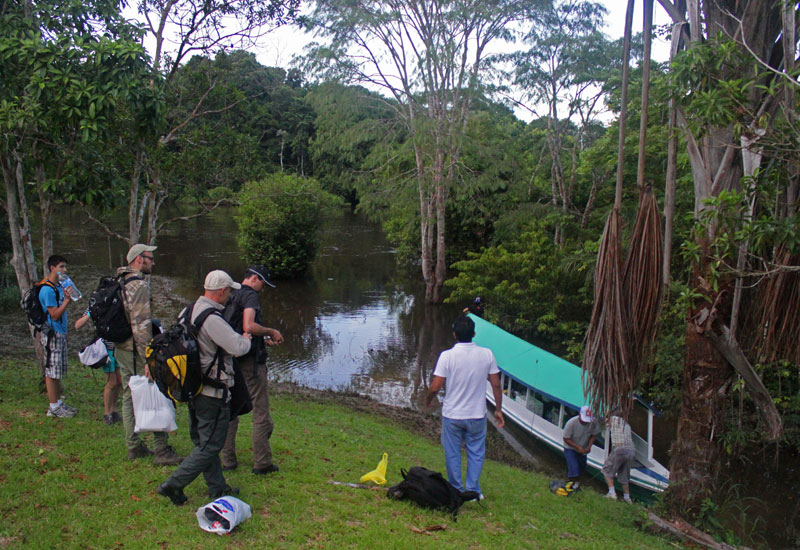
arrival at Santa Cruz


kids in the kitchen

and so it begins… - Frank and Bobby grabbing some critter during our first night hike
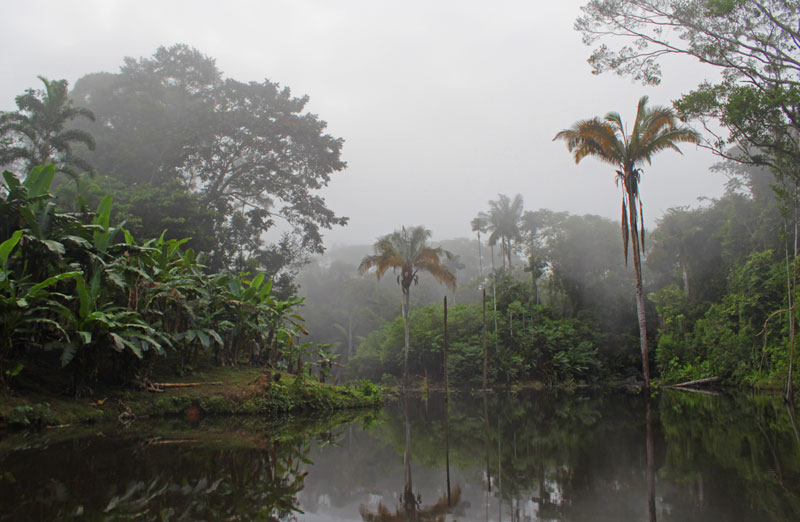
Santa Cruz pond - excellent herp habitat

primary rainforest – dark, even at noon

© Frank Deschandol
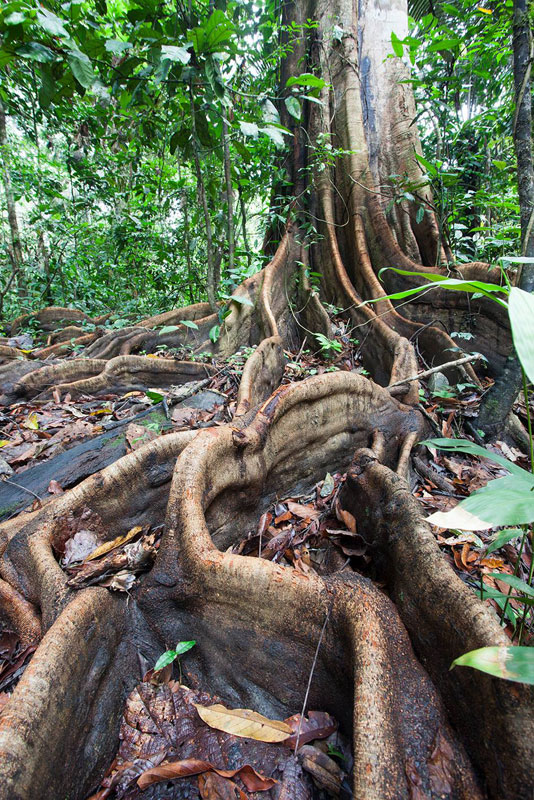
© Frank Deschandol

Heliconia - © Frank Deschandol

trying to recover a snake the kids spotted
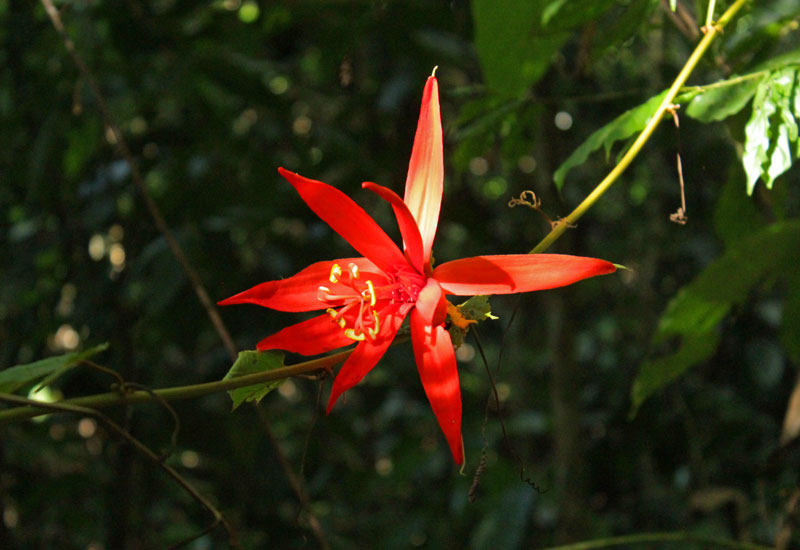
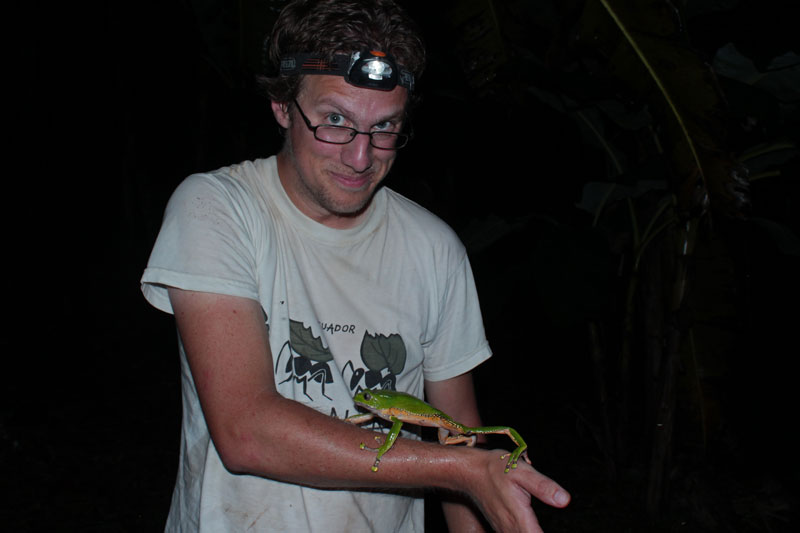
Phyllomedusa bicolor and me - © Bobby Bok

the most memorable moment of the trip – © Nina from NY
A very scary incident & an unscheduled stop in Iquitos
While I clearly want to stress that our guide Edwin was a tremendous help in finding and catching animals, his slight lack of more professional herpetological knowledge did have a nasty effect during what involuntarily became our final night in Santa Cruz. A snake very much resembling the Black-headed Calico Snake (Oxyrhopus (melanogenys) vanidicus) I had caught two nights earlier was found, while Bobby and I were again at the pond (frog boys vs. snake boys). As the snake was passed on, it bit Frank in the finger. The animal’s jumpy behaviour then made Peter realize that they had all failed to identify this snake as the dangerous coral snake it truly was – a beautiful but highly venomous Micrurus hemprichii. Frank soon experienced a lot of pain and passed out for a while. Edwin and Luis tried to arrange for a boat to take Frank as soon as possible to an Iquitos hospital. Before reaching the city, Frank’s situation had deteriorated dramatically, up to the point where he could hardly breathe. The rest of us were forced to stay in Santa Cruz, helplessly waiting in terror. The next day, we felt huge relieve to hear that Frank’s situation had stabilised and that he was going to make it. We all went back to Iquitos. Paying the hospital bills and related costs was quite a mess, but in the end & only one night later, we were reunited and able to leave for Sabalillo all together. Lessons learned the hard way: if you go herping in a new area, learn as much as you can about the local snake fauna, never handle snakes barehanded in an area where you are insufficiently familiar with the local species (but use the common snake-handling tools), always be sceptical towards any identification, ... Needless to say, this was a close call and we are very, very, very happy it ended so well.
carrying Frank to the boat – © Peter Engelen
still alive! – © Peter Engelen
CAMP 2: Sabalillo
Still somewhat shocked by the bite incident, we were really tired when arriving after dark at Sabalillo along the Río Apayacu, a rather small northern tributary of the Amazon river. This was the most primitive of our stays (e.g., bathroom = river, toilet = hole in the ground), but I loved it for its tranquillity. We stayed here for 4 nights. Here, we found our first Amazon Tree Boa (Corallus hortulanus, but could not catch it), two species of tiny but much appreciated poison-dart frogs (Ranitomeya spp.) and plenty of other species including the much desired Surinam Toad (Pipa pipa). The way we finally 'found' a gladiator treefrog (Hypsiboas boans) is also both funny and memorable. After several days of herping, swimming, a nice visit to a local town and a memorable frisbee match with the children of the lodge’s keeper, we decided we’d like to move on to the final, more accommodating camp, Madre Selva.

on the mighty Amazon once more


late arrival

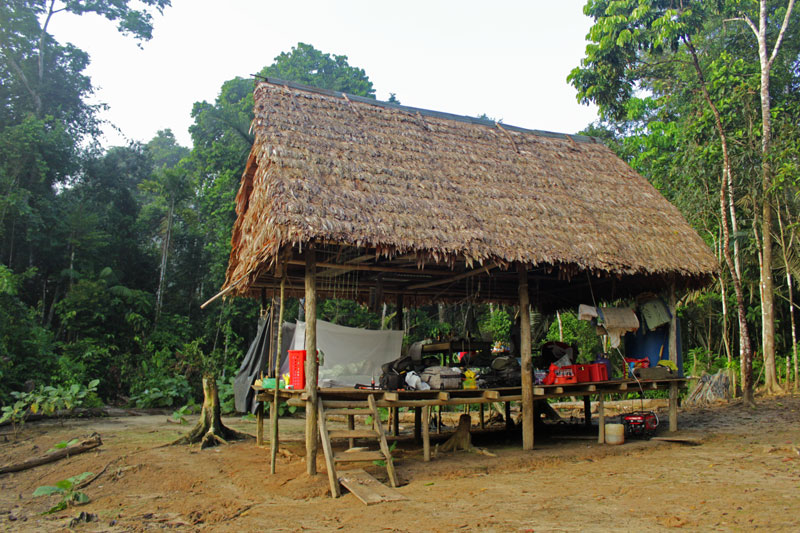
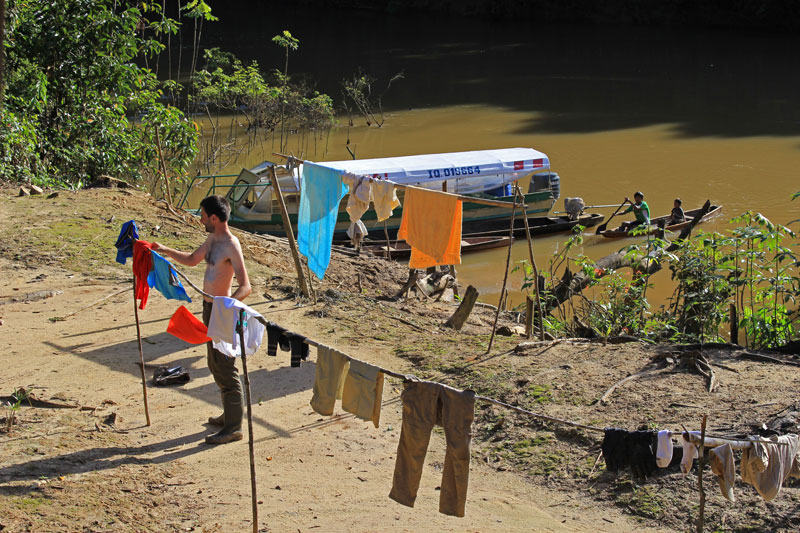
© Peter Engelen

Frank, Bobby and Anolis transversalis
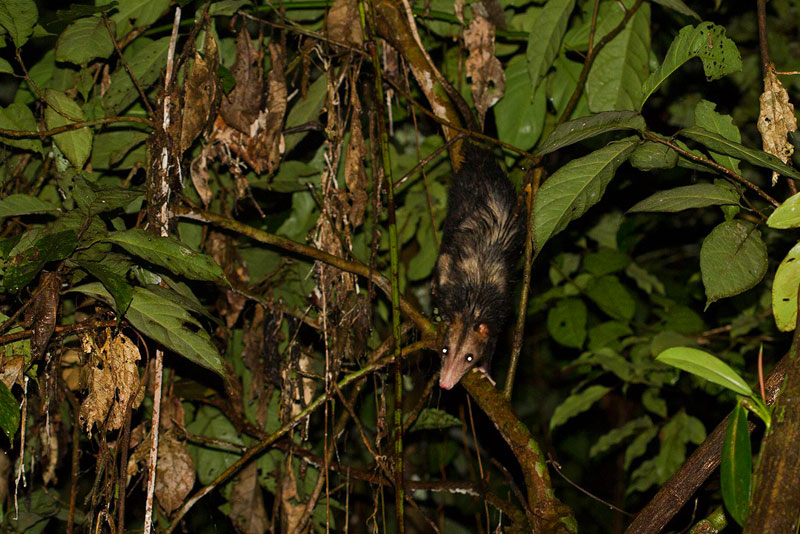
© Frank Deschandol
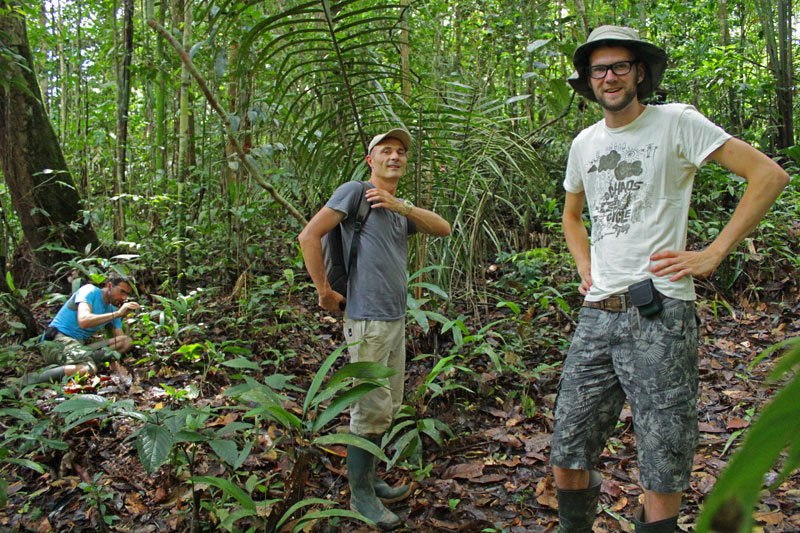
in reticulata habitat

© Peter Engelen
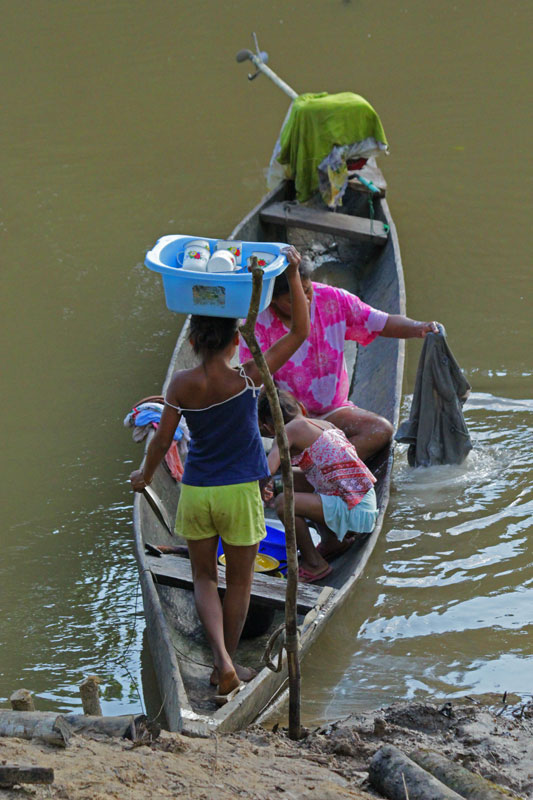
dishes and laundry
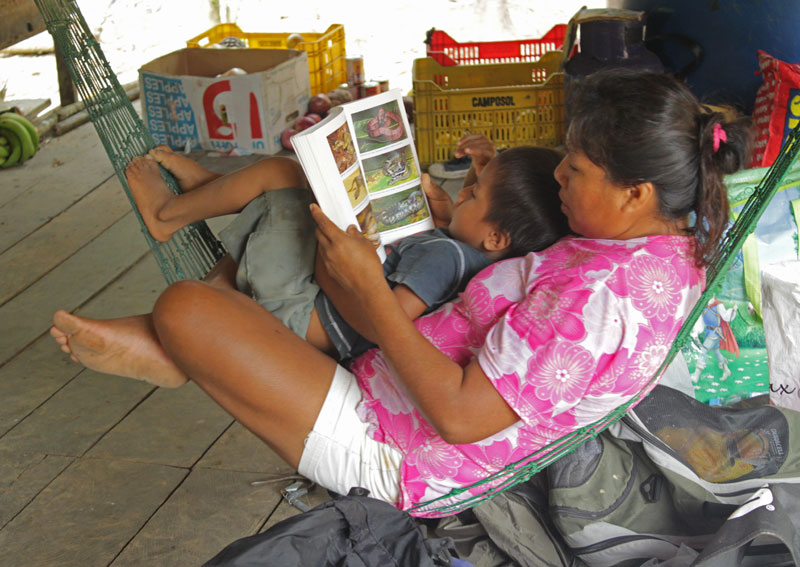
a good education is worth a lot

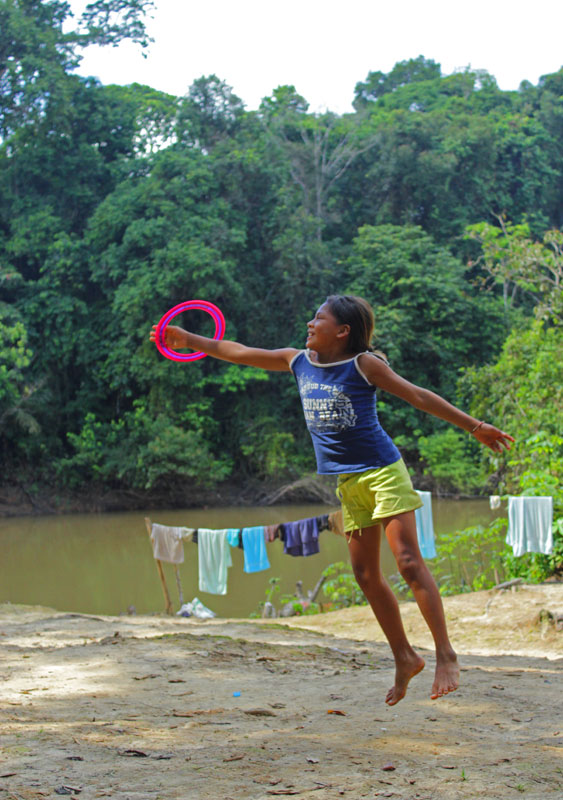

Hypsiboas boans and me - © Bobby Bok
CAMP 3: Madre Selva
Because this site’s list of known species is the longest (surely biased by observer effects), we decided to spend most of our time here. We spend 8 nights of our time here. This is the largest, most developed, site. During the 4 first nights, we shared the large camp with a group of American students and their mentors (including Devon Graham). The 4 final days were much more calmer, as we had the site all to ourselves – just the 7 of us (4 Euro boys and 3 Peruvian helpers). Herpwise, our high expectations were perhaps not entirely met, but we sure also had some fantastic herp encounter here. Highlights include the extremely cute Bolitoglossas, the Common Harlequin Toad (Atelopus spumarius), a lot more beautiful Hypsiboas frogs, numerous tree boas, Aquatic Coral Snakes (Micrurus surinamensis), a big fer-de-lance (Bothrops atrox), the cutest turtle in the world (matamata (Chelus fimbriatus), and Peter finally managing to catch a huge Spectacled Caiman (Caiman crocodilus). Both before and after our time here, we had the pleasure of seeing a Green Iguana (Iguana iguana) along the larger rivers.




Casa Bob & Jer

“Bushmeister”


© Bobby Bok




© Peter Engelen

Bobby loves Bolito

Bob & smoky jungle frog



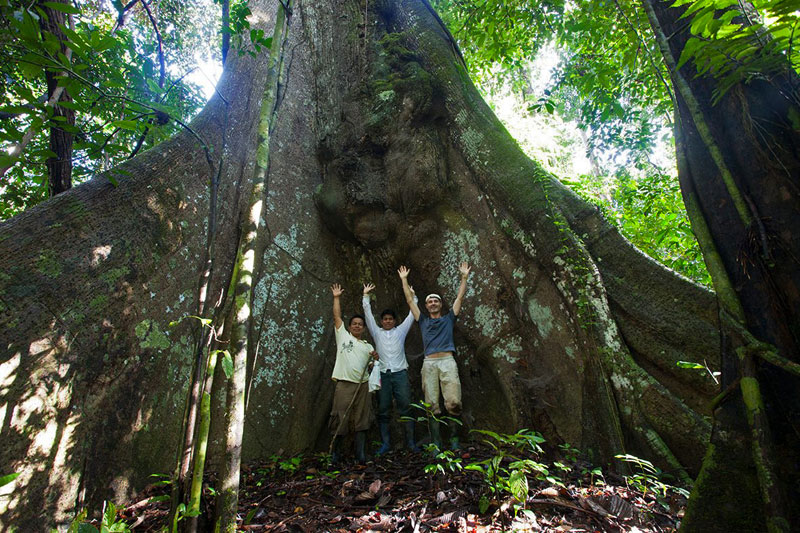
© Frank Deschandol
A final night in Iquitos and back home
Because of a rather early flight to Lima, we had to spend our final night in Iquitos. A copious dinner and a crazy night out with our Peruvian friends Edwin and Luis made for the perfect end to an unforgettable trip.

garden of Hospedaje La Pascana with some frogs and geckoes
